Resources
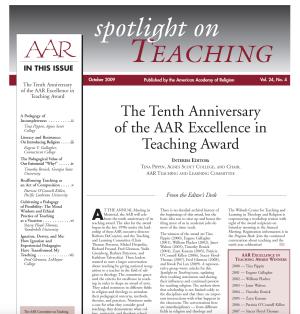
Journal issue. Full text is available online.
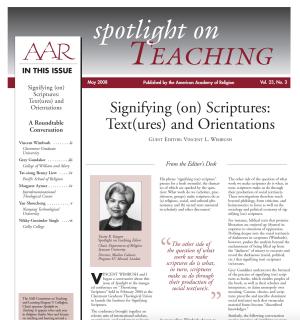
Journal issue. Full text is available online.

This book contains a collection of studies of prominent educators who have made significant contributions to handing on the Catholic intellectual tradition in the United States. These men and women have enriched this tradition by careful attention to educational theories and methods that find their origin in the Jewish and Christian past. Ancient Israel was assiduous in handing on the Torah or Law, the prophets dramatically called people back to the practices of the covenant, and the sages gave practical advice for everyday living. The Acts of the Apostles and the Letters of Paul chronicle the careful attention to safeguarding and transmitting the teachings in the early apostolic Christian communities. Contributors to this tradition in the past three centuries have been mainly European scholars. However, in the past two centuries educators in the United States have made notable contributions to the task of handing on the Catholic intellectual tradition.

This book is about teaching, interfaith dialogue and theological education. The core of the book: six critical case studies of seminary taught, degree courses in interfaith dialogue. The cases give expression to a broad range of dialogical pedagogies and course formats, and they include the courses’ syllabi and bibliographies. By critical case we mean one that describes not only the context, content, methods and related goals and rationale of the course, but also presents an evaluation of the course and discussion of the implications of the evaluation for teaching interfaith dialogue in theological institutions. (From the Publisher)
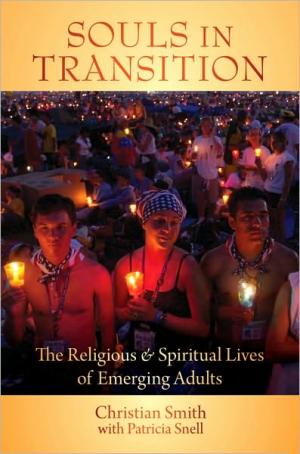
How important is religion for young people in America today? What are the major influences on their developing spiritual lives? How do their religious beliefs and practices change as young people enter into adulthood? Christian Smith's Souls in Transition explores these questions and many others as it tells the definitive story of the religious and spiritual lives of emerging adults, ages 18 to 24, in the U.S. today. This is the much-anticipated follow-up study to the landmark book, Soul Searching: The Religious and Spiritual Lives of American Teenagers. Based on candid interviews with thousands of young people tracked over a five-year period, Souls in Transition reveals how the religious practices of the teenagers portrayed in Soul Searching have been strengthened, challenged, and often changed as they have moved into adulthood. The book vividly describes as well the broader cultural world of today's emerging adults, how that culture shapes their religious outlooks, and what the consequences are for religious faith and practice in America more generally. Some of Smith's findings are surprising. Parents turn out to be the single most important influence on the religious outcomes in the lives of young adults. On the other hand, teenage participation in evangelization missions and youth groups does not predict a high level of religiosity just a few years later. Moreover, the common wisdom that religiosity declines sharply during the young adult years is shown to be greatly exaggerated. Painstakingly researched and filled with remarkable findings, Souls in Transition will be essential reading for youth ministers, pastors, parents, teachers and students at church-relatedschools, and anyone who wishes to know how religious practice is affected by the transition into adulthood in America today. (From the Publisher)

Part of the groundbreaking Connecting with e-Learning series, A Guide to Authentic e-Learning provides effective, working examples to engage learners with authentic tasks in online settings. As technology continues to open up possibilities for innovative and effective teaching and learning opportunities, students and teachers are no longer content to accept familiar classroom or lecture-based pedagogies that rely on information delivery and little else. Situated and constructivist theories advocate that learning is best achieved in circumstances resembling the real-life application of knowledge. While there are multiple learning design models that share similar foundations, authentic e-learning tasks go beyond process to become complex, sustained activities that draw on realistic situations to produce realistic outcomes. A Guide to Authentic e-Learning: • develops the conceptual framework for authentic learning tasks in online environments • provides practical guidance on design, implementation, and evaluation of authentic e-learning tasks • includes case studies and examples of outcomes of using authentic e-learning tasks Written for teaching professionals in Higher Education who teach online, A Guide to Authentic e-Learning offers concrete guidelines and examples for developing and implementing authentic e-learning tasks in ways that challenge students to maximize their learning. This essential book provides effective, working examples to engages learners with authentic tasks in online learning settings. (From the Publisher)
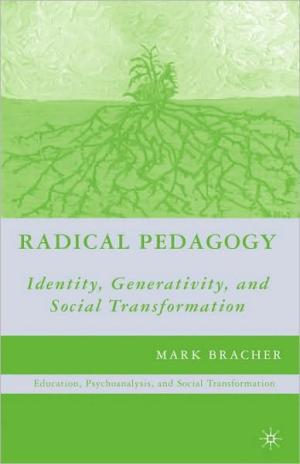
Radical Pedagogy argues that longstanding pedagogical aims and practices are ineffective in promoting learning and social change and proposes a new strategy for achieving these ends. Drawing on recent research in psychoanalysis, social psychology, and cognitive science, Bracher argues that the most effective way to solve social problems such as violence, prejudice, and substance abuse on a mass scale, as well as impediments to learning and personal well being, is through a pedagogy that addresses their common root cause: identity vulnerability.To this end, Bracher formulates psychoanalytically based practices to develop more resilient, secure, and prosocial identities for both teachers and students. (From the Publisher)
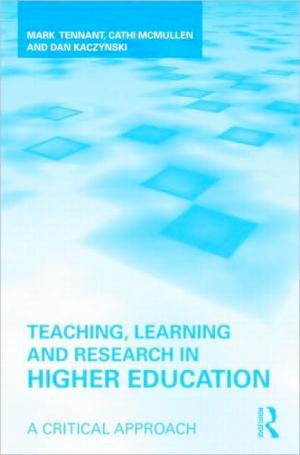
Teaching, Learning and Research in Higher Education offers a combination of critical perspectives and practical advice that is ideally suited for individuals interested in enhancing their practice through analysis and critique. The aim is to promote a critical understanding of one's own practices: to foster personal and professional formation through a reflexive engagement with one's environment and circumstances. At a practical level this means to continuously think about how to adjust practice rather than following a formulaic approach derived from any particular educational theory. Teaching, Learning and Research in Higher Education argues that academics can find space for their own agency in the midst of institutional policies and practices that serve to frame, as well as delimit and constrain, what counts as good academic work in teaching and research. This text bridges a gap between those books that provide a high-level analysis of contemporary higher education, the more practical texts on how to be a good teacher in higher education, and those texts which aim to improve teaching through better understanding of the learning process. Topical chapters include: Teacher-learner relationship, Learning groups, Practice-oriented learning, Teaching for diversity, e-learning, Assessment, Approaches to Staff Development, Quality assurance, Supervision and Research education, Doing research, and Teaching & Research. A must-have resource for higher education professions, academic developers, professionals, and anyone looking to improve their teaching and learning practices, Teaching,Learning and Research in Higher Education is also appropriate for continuing and professional development courses in the UK and teaching and learning courses in the US. Mark Tennant is Dean of the University Graduate School, University of Technology, Sydney. Cathi McMullen is Lecturer in the School of Marketing and Management at Charles Sturt University. Dan Kaczynski is Professor in the Educational Leadership department at Central Michigan University. (From the Publisher)
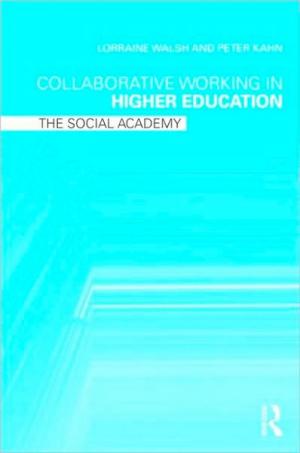
Collaborative working is an increasingly vital part of Higher Education academic life. Traditionally, university culture supported individual research and scholarship. Today, the focus has shifted from the individual to the group or team. Collaborative Working in Higher Education takes the reader on a journey of examination, discussion, and reflection of emerging collaborative practices. The book offers suggestions for developing practice via a broad overview of the key aspects of collaboration and collaborative working, informed by focused case studies and the international perspectives of the contributing authors. The book has three main parts: Part I: Examines the social nature of collaborative working from a practical and critical perspective, focusing on four dimensions of collaborative working: academic practice, professional dialogues, personal and organizational engagement and social structures. It considers organizational models, varied approaches, potential challenges posed by collaborative working, and reflection on the management of collaboration at different stages. Part II: Focuses on the different aspects of collaborative working, building on the dimensions introduced in Part I, and addressing the crossing of boundaries. It looks at different contexts for collaboration (e.g. discipline-based, departmental, institutional and international) using case studies as examples of collaborative strategies in action, providing learning points and recommendations for practical applications. Part III: In addition to considering forms of collaboration for the future, this part of the book engages the reader with athough-provoking round-table discussion that itself embodies an act of collaboration. Collaborative Working in Higher Education is a comprehensive analysis of how collaboration is reforming academic life. It examines the shifts in working practices and reflects on how that shift can be supported and developed to improve practice. Higher Education faculty, administrators, researchers, managers and anyone involved in collaborative working across their institution will find this book a highly useful guide as they embark on their own collaborations. (From the Publisher)

Journal Issue. This issue considers the sustainability of English studies and of the humanities as a whole in the context of shrinking budgets and job opportunities and of shifting resources. Exploring topics from academic freedom and globalization to digitization, diversity, and the value of a humanities-based education, “To Delight and Instruct” reexamines the work of the English professor and calls for a reassessment of the priorities and means that undergird it. Contributors examine the faculty’s fundamental responsibilities to classroom teaching, the university, and the community. Attending to the relationship between changing technologies and literacy in a global environment, the issue not only argues for a reassertion and reimagining of the humanities in the contemporary university but, perhaps as important, helps articulate a way forward.